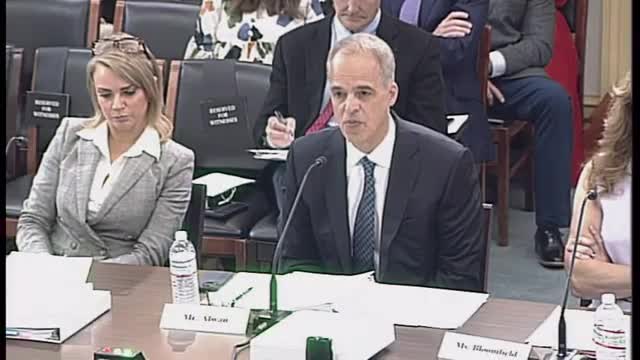Toronto Wireless revolutionizes broadband with groundbreaking technology
September 12, 2024 | Energy and Commerce: House Committee, Standing Committees - House & Senate, Congressional Hearings Compilation
This article was created by AI summarizing key points discussed. AI makes mistakes, so for full details and context, please refer to the video of the full meeting. Please report any errors so we can fix them. Report an error »

In a recent government meeting, leaders from various sectors gathered to address the pressing issue of the digital divide in the United States. The discussion highlighted innovative solutions and technologies aimed at expanding broadband access, particularly in underserved areas.
Toronto Wireless, a next-generation fixed wireless access technology company, presented its advancements in delivering high-speed internet. The CEO emphasized the company's unique ability to provide reliable broadband service without requiring a direct line of sight to transmission towers, a significant challenge in many regions. This technology allows for effective service delivery over distances of up to 20 miles, even in non-line-of-sight conditions, which is crucial for reaching homes and businesses obstructed by physical barriers.
The CEO also discussed the company's breakthrough in interference mitigation, which enhances the efficiency of spectrum use. This technology, termed asynchronous burst interference cancellation, enables Toronto Wireless to operate effectively in both licensed and unlicensed spectrums, significantly improving broadband performance.
Financial considerations were a key theme, with the CEO noting that Toronto Wireless can deliver high-speed internet at a fraction of the cost of traditional fiber installations. This affordability is particularly important in areas where fiber deployment is hindered by geographical challenges. The company aims to complement fiber technology rather than replace it, advocating for a hybrid approach to broadband deployment.
The meeting underscored the urgency of timely broadband deployment, with Toronto Wireless claiming that its technology can be operational within weeks, contrasting sharply with the years it often takes to install fiber networks. The CEO extended an invitation to lawmakers to experience the technology firsthand, highlighting the company's commitment to collaboration in bridging the digital divide.
Shirley Bloomfield, CEO of NTCA, also contributed to the discussion, representing community-based providers that have made significant strides in broadband deployment, particularly in rural areas. She noted that over 80% of customers served by NTCA members have access to high-speed fiber connections, showcasing the ongoing efforts to enhance connectivity across the nation.
The meeting concluded with a shared commitment among participants to continue exploring innovative solutions to ensure that all Americans have access to reliable and affordable broadband services.
Toronto Wireless, a next-generation fixed wireless access technology company, presented its advancements in delivering high-speed internet. The CEO emphasized the company's unique ability to provide reliable broadband service without requiring a direct line of sight to transmission towers, a significant challenge in many regions. This technology allows for effective service delivery over distances of up to 20 miles, even in non-line-of-sight conditions, which is crucial for reaching homes and businesses obstructed by physical barriers.
The CEO also discussed the company's breakthrough in interference mitigation, which enhances the efficiency of spectrum use. This technology, termed asynchronous burst interference cancellation, enables Toronto Wireless to operate effectively in both licensed and unlicensed spectrums, significantly improving broadband performance.
Financial considerations were a key theme, with the CEO noting that Toronto Wireless can deliver high-speed internet at a fraction of the cost of traditional fiber installations. This affordability is particularly important in areas where fiber deployment is hindered by geographical challenges. The company aims to complement fiber technology rather than replace it, advocating for a hybrid approach to broadband deployment.
The meeting underscored the urgency of timely broadband deployment, with Toronto Wireless claiming that its technology can be operational within weeks, contrasting sharply with the years it often takes to install fiber networks. The CEO extended an invitation to lawmakers to experience the technology firsthand, highlighting the company's commitment to collaboration in bridging the digital divide.
Shirley Bloomfield, CEO of NTCA, also contributed to the discussion, representing community-based providers that have made significant strides in broadband deployment, particularly in rural areas. She noted that over 80% of customers served by NTCA members have access to high-speed fiber connections, showcasing the ongoing efforts to enhance connectivity across the nation.
The meeting concluded with a shared commitment among participants to continue exploring innovative solutions to ensure that all Americans have access to reliable and affordable broadband services.
View full meeting
This article is based on a recent meeting—watch the full video and explore the complete transcript for deeper insights into the discussion.
View full meeting